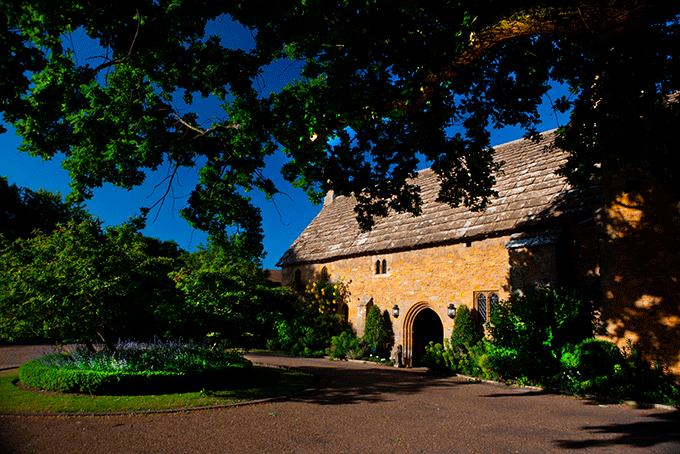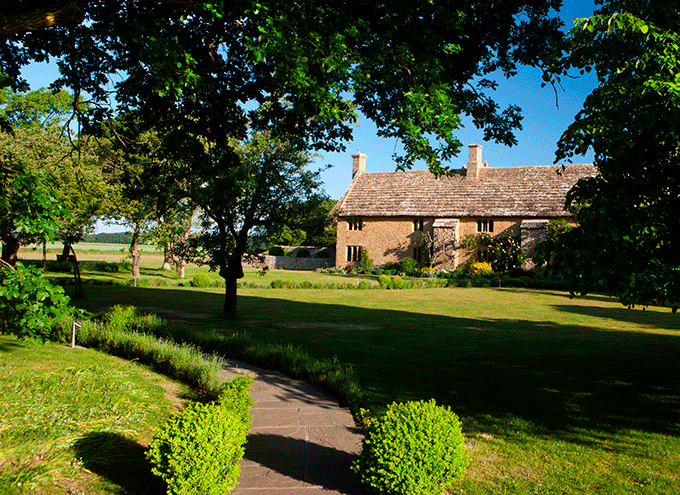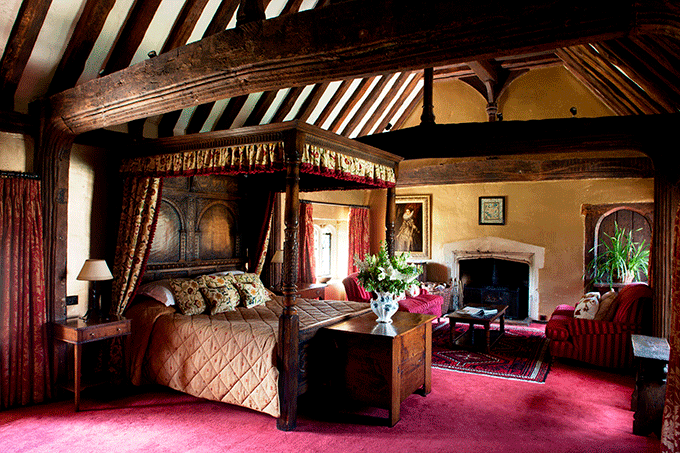Step back in time with a stay at this West Sussex hotel, which once provided the backdrop for 1930s high society, with medieval-style buildings, thatched cottages and a Norman chapel.

It’s not hard to buy into the story that the Bailiffscourt Hotel & Spa is housed in an ancient manor, which would have provided a perfect hunting lodge for King Henry VIII and his cronies, but herein lies the twist: far from being medieval, the building only dates back to the 1920s.
The house was designed for Lord Moyne, Walter Guinness of the famous brewing family, who bought up the 750-acre estate on which the hotel stands near the beach at Climping in West Sussex in the 1920s. At the time the land was home to a modest farmhouse and Norman chapel – in fact it’s from the latter that the hotel takes its name: built in the 12th century, demolished and then rebuilt in the 13th century, it was gifted to the Abbey of Seez in Normandy following the Conquest and the abbey subsequently sent over a ‘bailiff’ to look after its property.

Moyne employed architect Amyas Phillips with the task of creating a building in a medieval style for his wife, Lady Moynes. So committed was Lady Moynes to creating an authentic looking medieval home, as was the fashion of the time, that Phillips ended up scouring the country for original stone, as well as doors and windows from the period.
Once the property was finished it became the scene of numerous parties of the fashionable set of the 1930s. Guests included aristocracy, politicians, royalty and literary figures, who would gather here before and after jaunts to the likes of nearby Goodwood, until the death of Lady Moyne in 1939. During the war the rest of the family left the house, never to return and the house has been operating as a hotel since 1948.
Today you still get a real sense of the grandeur of Bailiffscourt’s decadent days and the antique furniture and tapestries that adorn the cosy lounges uphold the lie that this place is a lot older than it really is. But who cares if the property was built in 1520 or 1920, those are real Gothic mullioned windows that you look out of towards the beautifully manicured gardens, home to their very own moat, while inside the flagstone floors and open fires create a feeling of warmth and homeliness.

Upstairs the 39 rooms are all well appointed. Luckily for us, our room was Baylies, the hotel’s signature room, complete with vaulted ceiling. It was kitted out with every luxury – a huge four-poster bed with a pop-up TV at the foot of the bed, two lovely sofas and a table and chairs. The bathroom is the height of luxury, with two Victorian-style bath tubs sitting side by side, as well as his ‘n’ hers washbasins and a walk-in shower.

Downstairs in the Tapestry Restaurant the medieval theme continues and the modern British menu is good and beautifully served – dishes include such delights as roasted squab pigeon, veal, and honey-glazed duck breast. But beware, although immaculately presented and indisputably delicious, portions may be a tad small for some appetites.
The whole setting is very peaceful, with peacocks strolling the grounds and the spa is just across the way from the house with lovely pools – one outdoor – and a small gym if you are so inclined (we weren’t), plus free tea and coffee in an upper lounge. The treatments are very relaxing – we’d recommend the Drift Away, a full body massage that will leave you feeling fully refreshed. The sandy beach at Climping is also so close (two minutes) that a leisurely stroll in the morning or after dinner is almost mandatory.
Bailiffscourt is a great base for visiting Arundel Castle or the numerous unspoilt beaches of the south coast. Sitting on the lawn after dinner with a drink in hand it’s easy to imagine the soirees that have taken place here and the late-night conversations where one might have said more than one should.
Related articlesReview: the Angel Hotel, Bury St Edmunds |
Click here to subscribe! |
Download BRITAIN Magazine to your mobile today

 No mobile device? Purchase directly on Zinio for your desktop!
No mobile device? Purchase directly on Zinio for your desktop!





 © 2024
© 2024